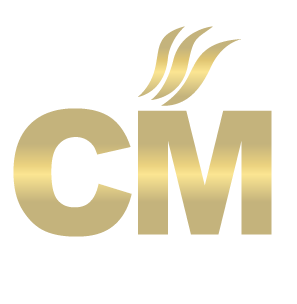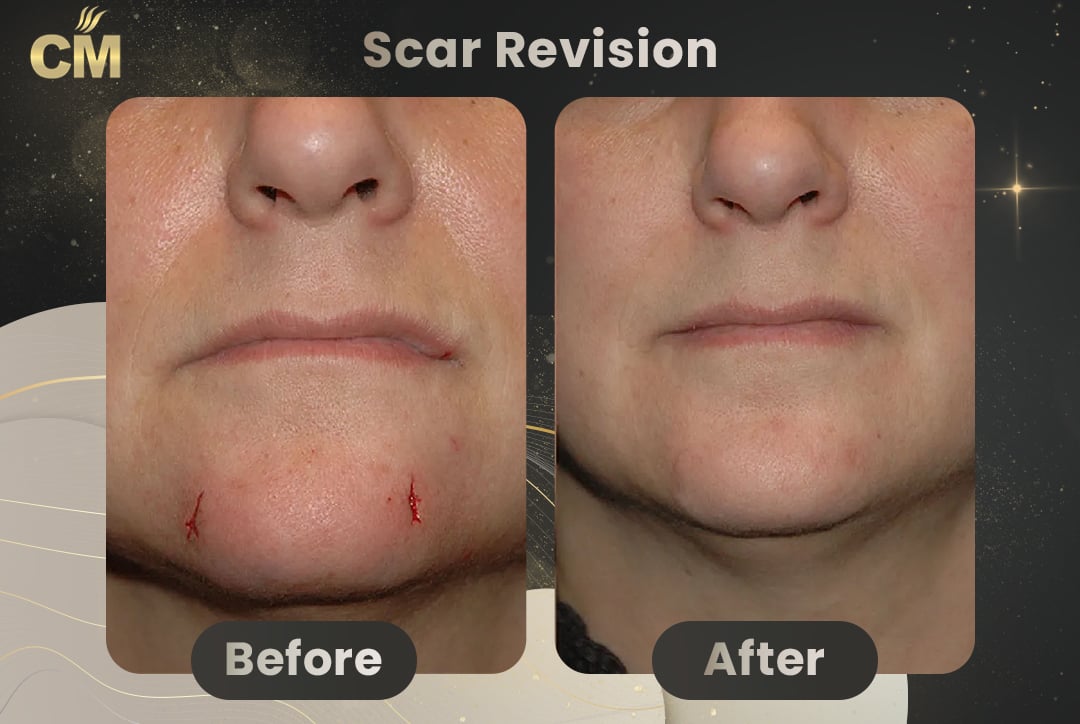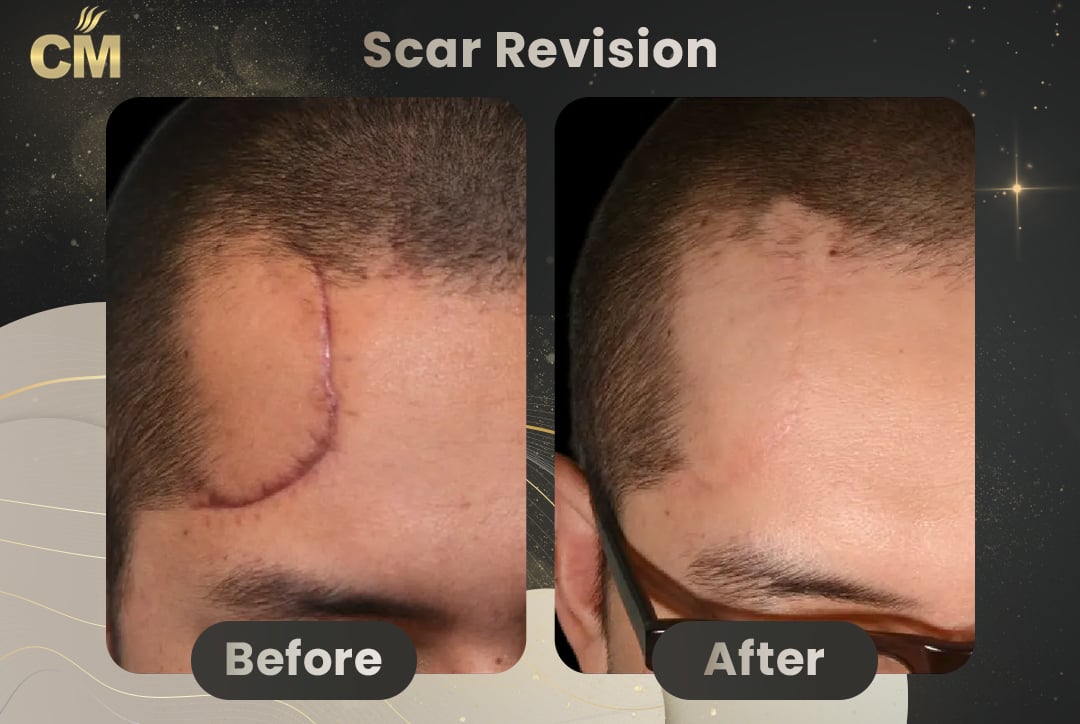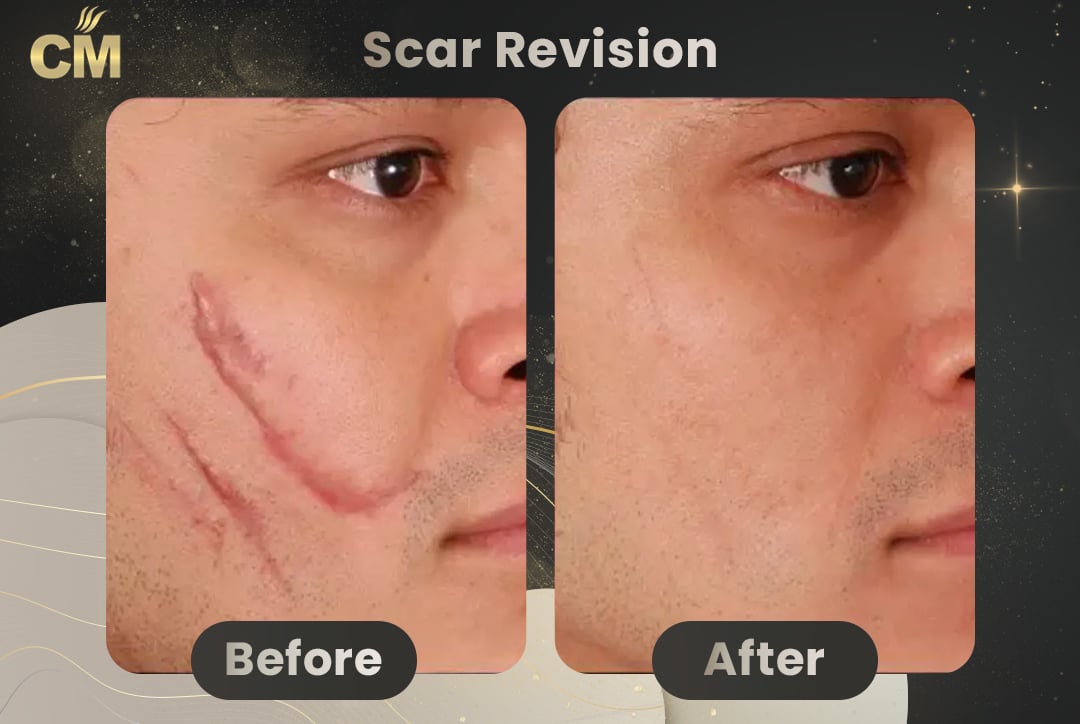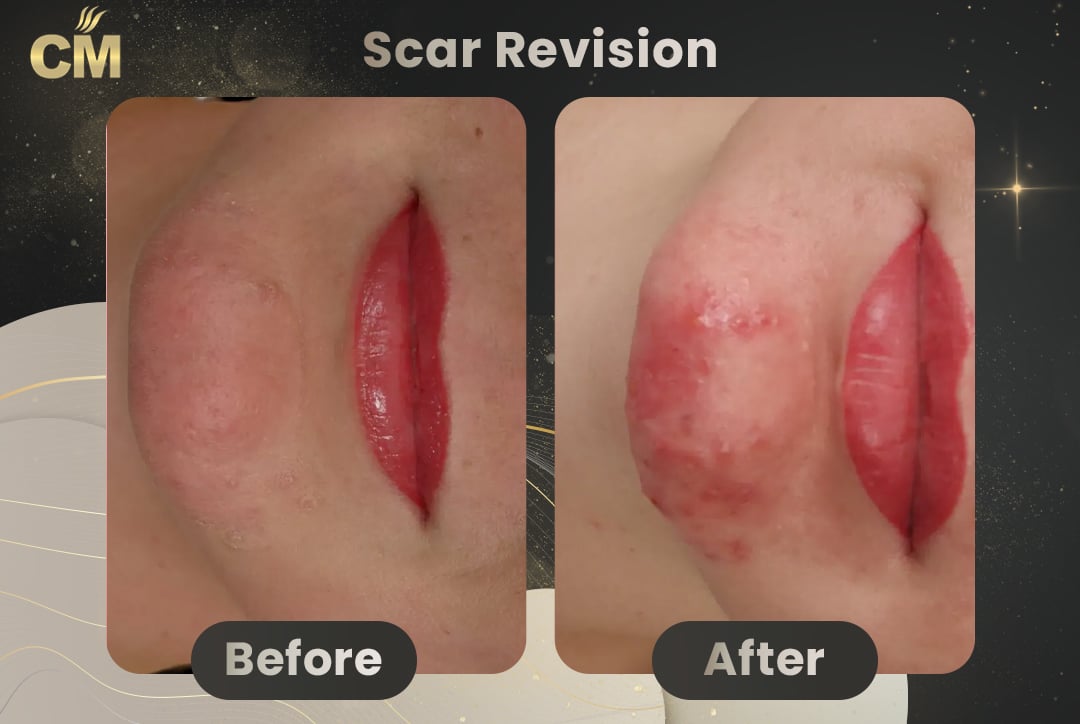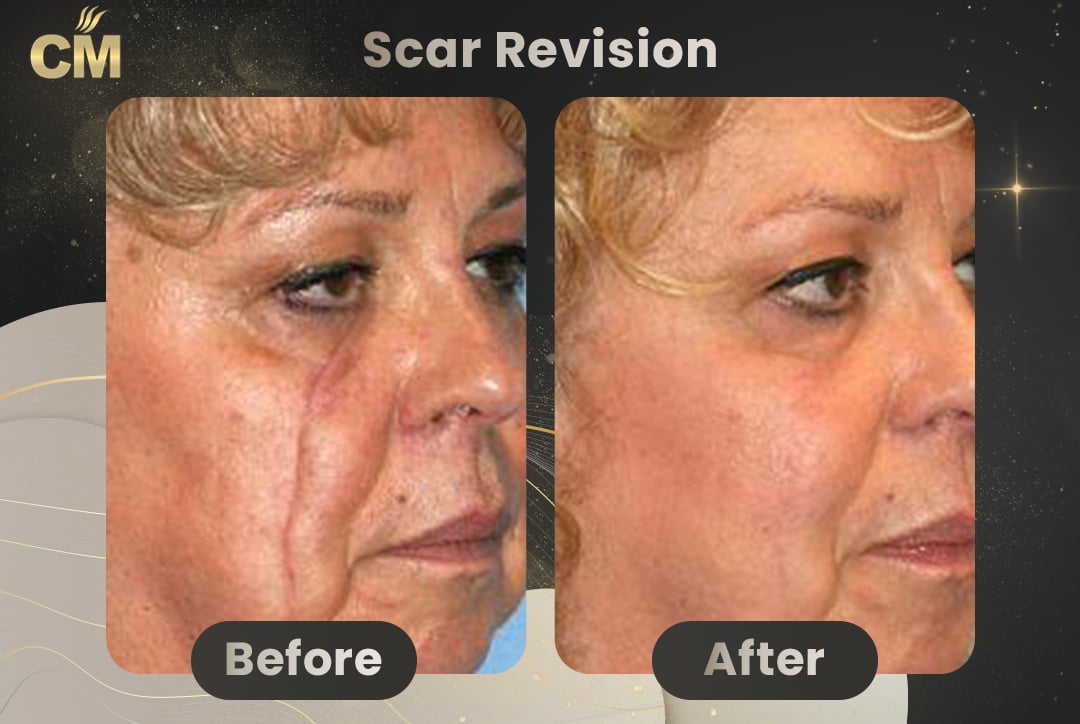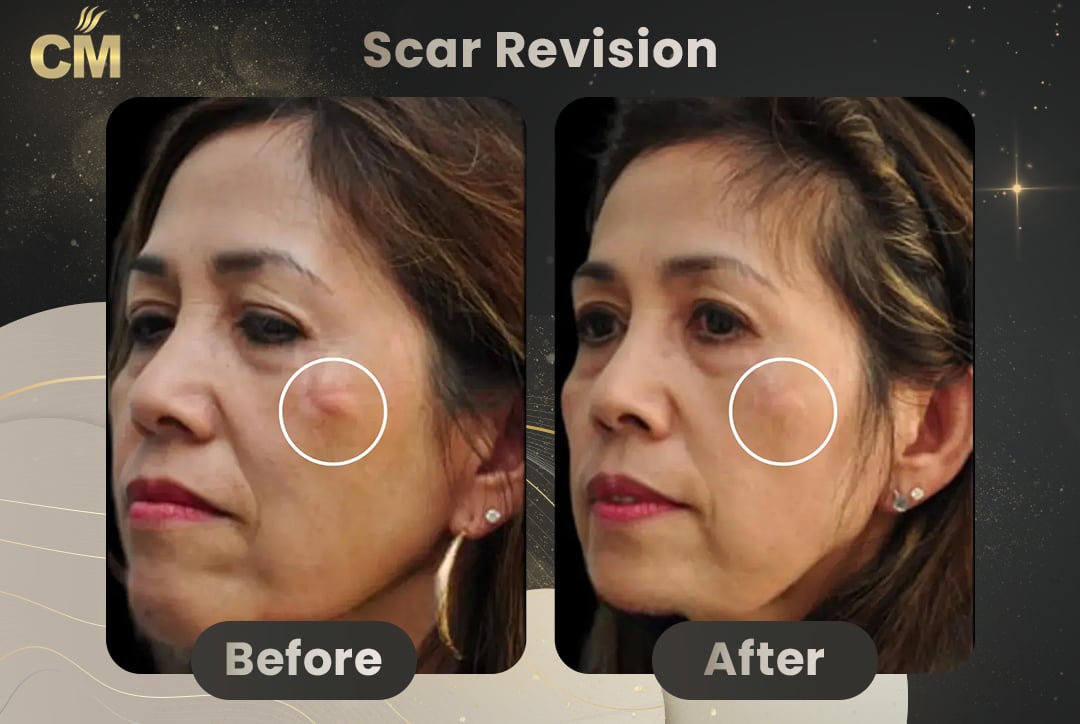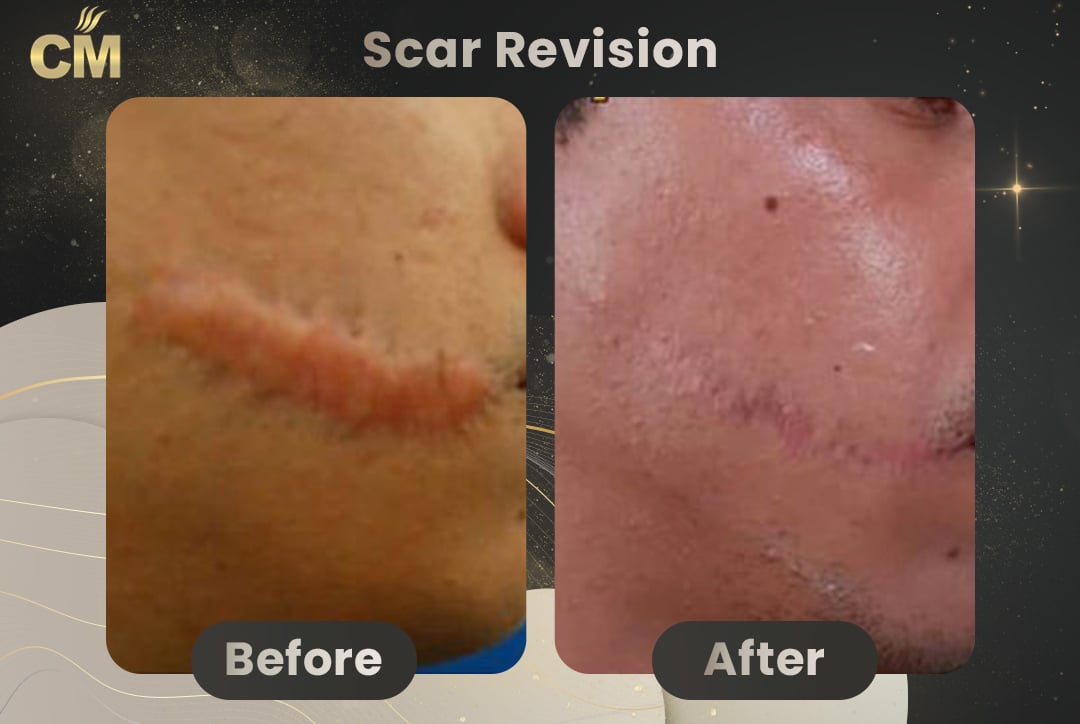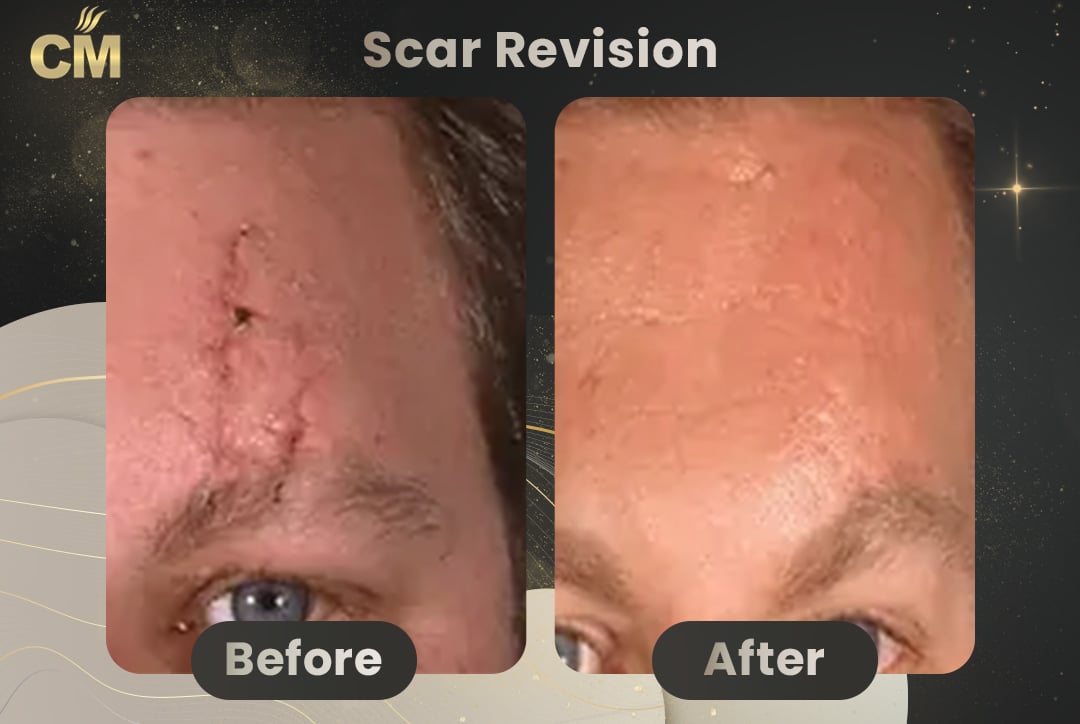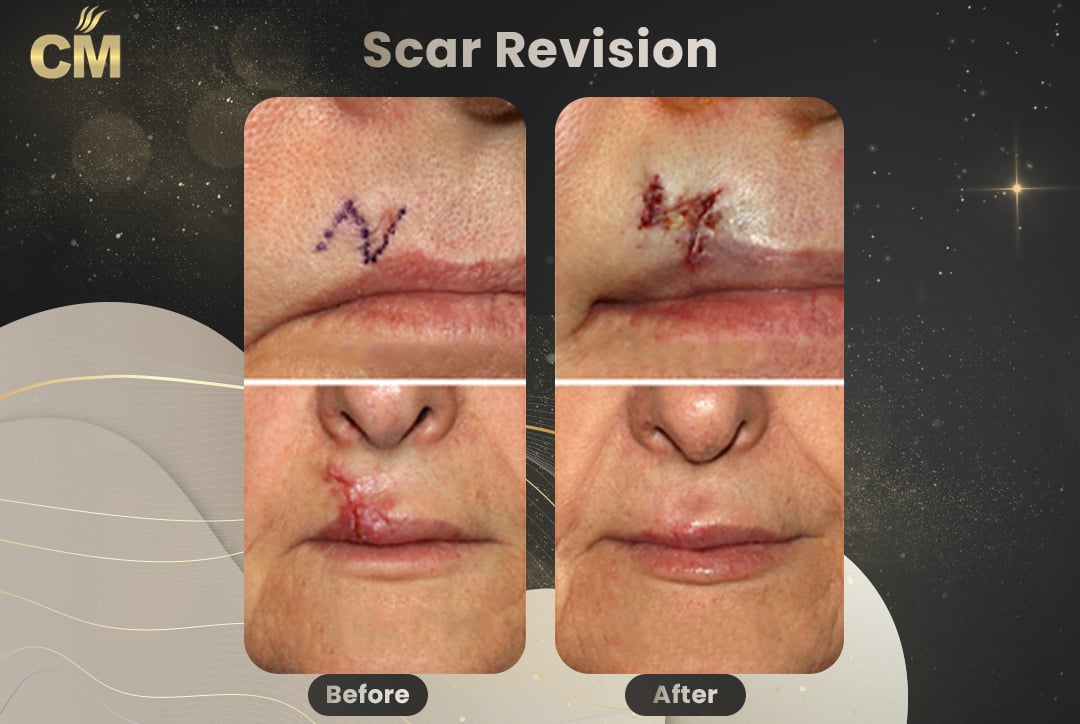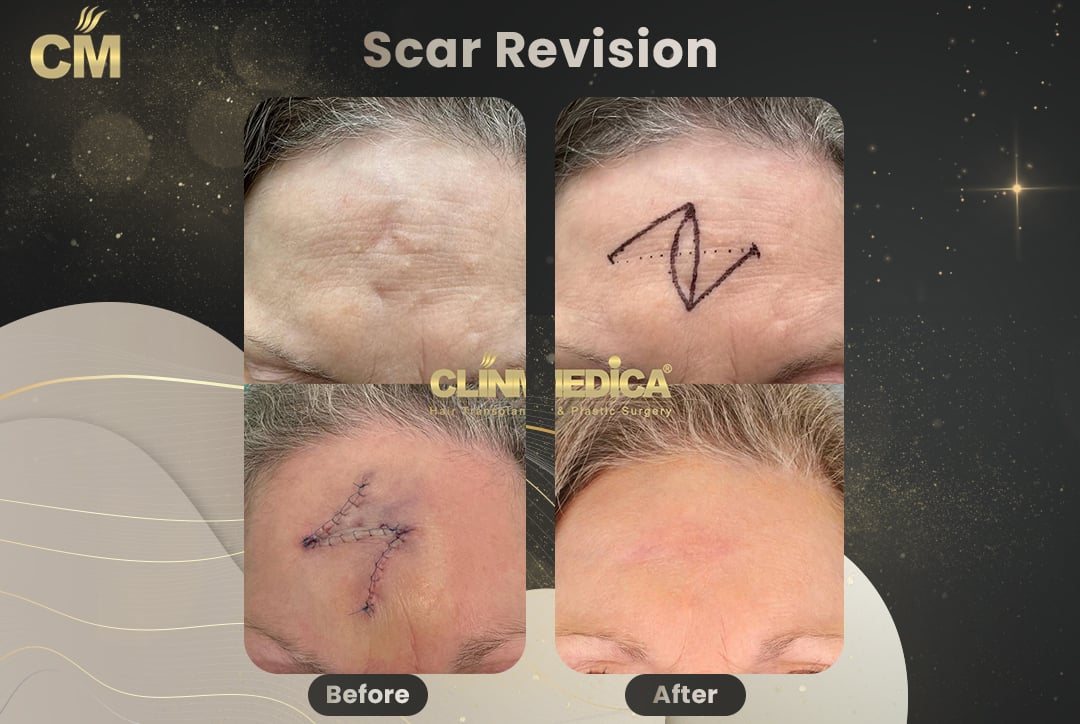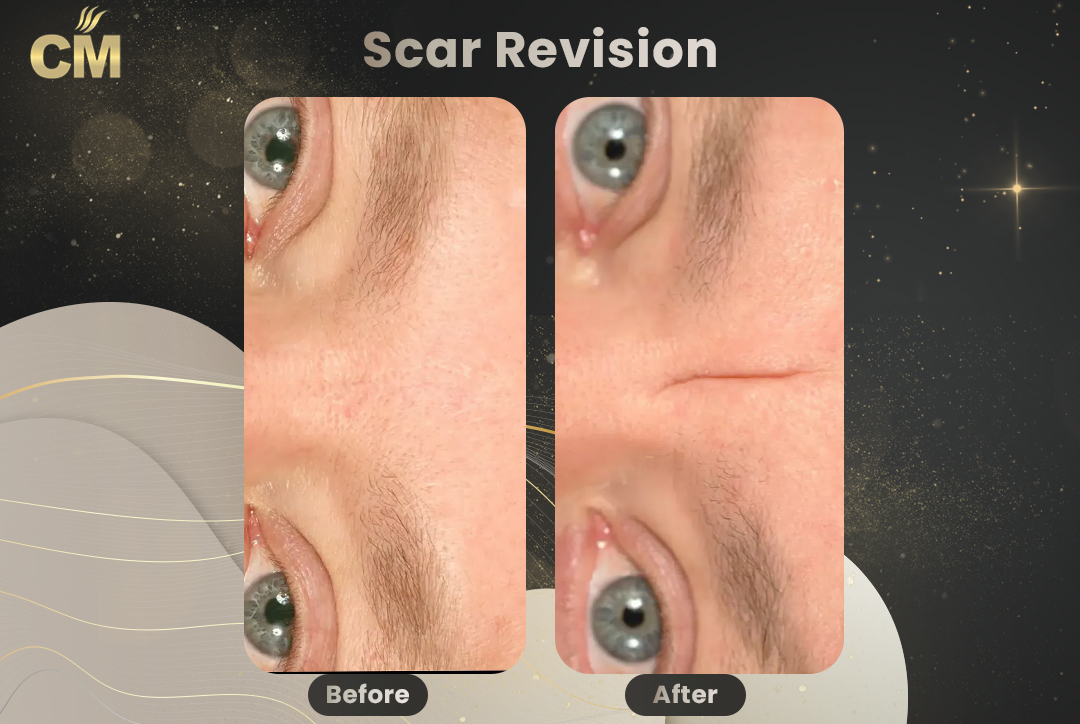Z-Plasty Scar Revision Before and After in Turkey
Z-Plasty is a time-tested surgical technique used in plastic and reconstructive surgery to revise scars, improve skin flexibility, and realign scars along natural skin folds. Originally developed for functional improvements, Z-Plasty is now widely used for both functional and cosmetic scar revision.
What Is Z-Plasty Scar Revision?
Z-Plasty is a scar revision technique that involves the creation of two triangular flaps of skin arranged in a Z-shaped pattern. These flaps are then transposed, repositioning the scar and redirecting skin tension. The technique not only shortens a contracted scar but also helps reorient it along natural tension lines (known as Langer’s lines), making the scar less visible.
Why Is Z-Plasty Performed?
Z-Plasty is typically recommended for:
-
Contracture release (often caused by burns or previous surgeries)
-
Scars that restrict movement around joints or facial features
-
Misaligned or raised scars that are cosmetically unappealing
-
Scars running perpendicular to natural skin folds
This technique is particularly useful in burn scar reconstruction, eyelid or lip contracture correction, and revision of long, straight scars.
How Does Z-Plasty Work?
The procedure involves the following steps:
-
Marking the Z-pattern: The original scar is placed in the center limb of the “Z.” Two equilateral triangles are marked at each end.
-
Incision and Flap Creation: The surgeon carefully cuts along the markings and creates two skin flaps.
-
Flap Transposition: These triangular flaps are rotated and repositioned—essentially « exchanging places. »
-
Closure: The skin is sutured in the new position, realigning the scar in a more natural direction.
The resulting scar is longer but often less noticeable and more flexible.
Benefits of Z-Plasty Scar Revision
-
Improves Functionality: Releases tight scar tissue that limits movement
-
Enhances Aesthetics: Reorients scars along natural creases, reducing visibility
-
Minimally Invasive: Can be done under local anesthesia in many cases
-
Customizable: Can be modified into double or multiple Z patterns for complex cases
Who Is a Good Candidate for Z-Plasty?
You may be a suitable candidate if:
-
You have a mature scar (generally more than 6–12 months old)
-
The scar causes functional limitations or cosmetic concerns
-
You are healthy enough for minor surgery
-
You have realistic expectations about the outcome
Not all scars are suitable for Z-Plasty, especially those in areas where skin is tight or under high tension.
Recovery After Z-Plasty
Recovery is generally quick and well-tolerated:
-
Stitches are typically removed within 5–10 days.
-
Swelling and bruising may last for a few days.
-
A mild dressing is applied to protect the area.
-
Physical therapy might be recommended if the surgery involved a joint.
The new scar may initially appear red or raised but typically fades over time. Most results become apparent after several weeks to months, depending on healing and scar maturation.
Risks and Considerations
As with any surgical procedure, Z-Plasty has some potential risks:
-
Infection or delayed wound healing
-
Scar widening or thickening
-
Unfavorable cosmetic result if not carefully planned
-
Recurrence of contracture in some cases
Choosing an experienced plastic or reconstructive surgeon significantly reduces these risks.
Z-Plasty vs. Other Scar Revision Techniques
While Z-Plasty is highly effective for specific types of scars, it may not be suitable for all cases. Alternatives include:
-
Laser resurfacing
-
Steroid injections
-
Skin grafting
-
W-plasty or geometric broken line closure
The best technique depends on the scar’s location, severity, and impact.
Z-Plasty Results and Before & After Images
The results of Z-Plasty are both functional and cosmetic, offering visible improvement in the appearance, orientation, and flexibility of scars. After healing, most patients notice that the scar is less noticeable, reoriented along natural skin folds, and in many cases, softer and more mobile. When contractures are involved, Z-Plasty can significantly improve range of motion and comfort, especially around joints or facial features.
Before and After Z-Plasty Images
Before and after images of Z-Plasty clearly demonstrate the transformation:
-
Tight, linear scars become less prominent
-
Scar tension is redirected, improving skin contour
-
Movement is often restored when the scar was restrictive
Z-Plasty remains a cornerstone technique in scar revision, especially when both function and appearance are affected. By redirecting tension and improving mobility, it offers a powerful solution for contractures, misaligned scars, and function-limiting injuries. If you’re considering scar revision, consult a board-certified plastic surgeon to determine whether Z-Plasty is right for your specific case.
